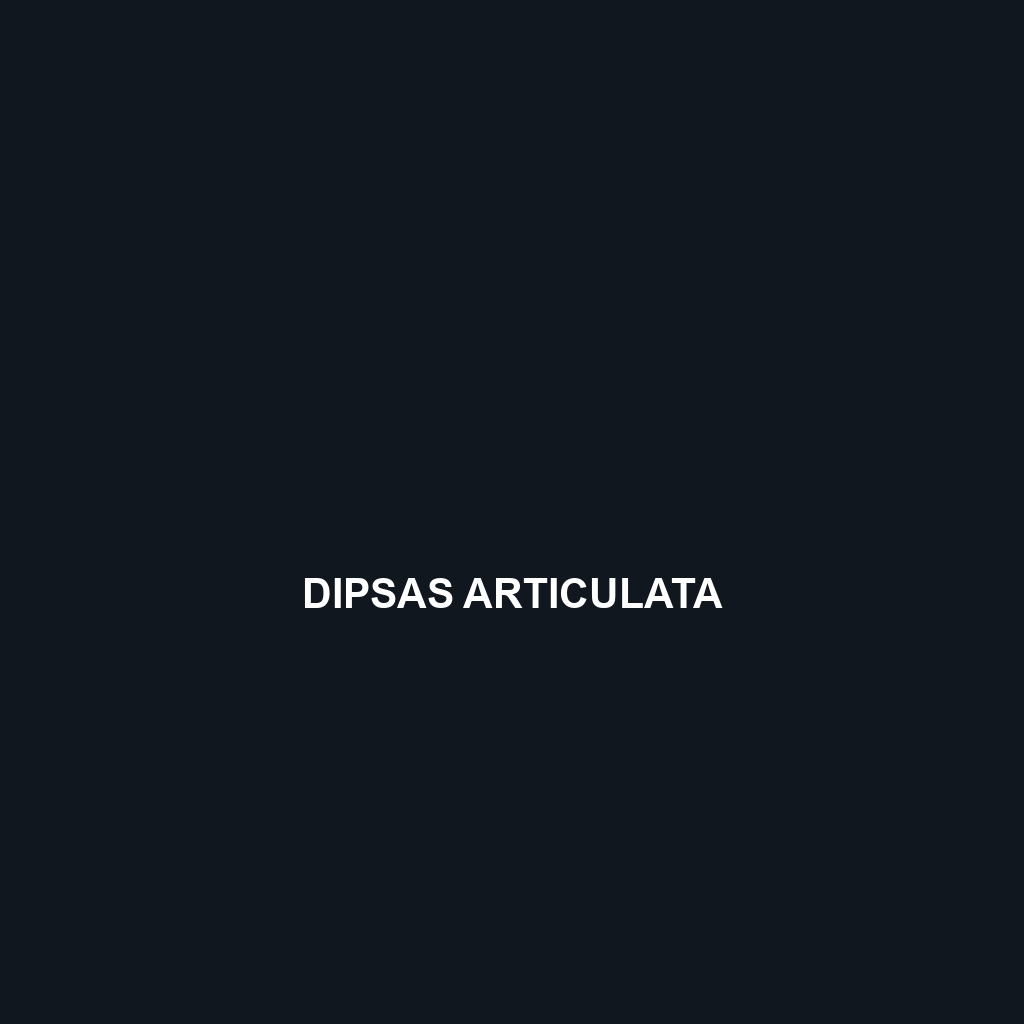-

Dipsas articulata
Dipsas articulata, or New World snail-eater, a slender, nocturnal snake found in the tropical rainforests of Central and South America. Measuring 60 to 100 cm in length, it boasts a striking pattern of dark spots and plays a vital role in controlling snail populations in its ecosystem.
-

Dipsadoboa viridis
Dipsadoboa viridis, a vibrant green snake primarily found in the rainforests of Central and West Africa. This agile predator thrives in humid environments, feeding on small mammals, birds, and reptiles, while playing a crucial role in maintaining ecological balance.
-

Dipsadoboa weileri
Dipsadoboa weileri, or Weiler’s snake, a medium-sized, nocturnal species native to Central Africa’s tropical rainforests, featuring camouflage with light brown hues and darker patterns, thriving in humid, vegetative environments. This skilled predator primarily feeds on small rodents and amphibians, playing a crucial role in maintaining ecological balance.
-

Diporiphora vescus
Discover Diporiphora vescus, a slender, nocturnal insectivorous species native to Australia, thriving in arid regions with adaptability. This vulnerable species plays a crucial role in its ecosystem by regulating insect populations and maintaining ecological balance.
-

Diporiphora pindan
Discover Diporiphora pindan, a diurnal lizard native to the arid environments of northern Australia’s Pindan region. With its impressive camouflage and insectivorous diet, this species thrives in sandy woodlands and plays a crucial role in maintaining ecological balance.
-

Diporiphora magna
Diporiphora magna, a fascinating Australian species known for its ability to blend into sandy and rocky habitats, agile climbing skills, and carnivorous diet primarily consisting of insects. With distinctive pale gray to sandy brown coloration and impressive reproductive habits, this resilient species plays a crucial role in maintaining ecological balance.
-

Diporiphora linga
The Diporiphora linga, or Linga Dragon Lizard, is an insectivorous species native to arid regions of eastern Australia, characterized by its slender body measuring 15 to 25 cm, distinctive coloration for camouflage, and behaviors like territorial displays and tail autotomy as a defense mechanism. This lizard plays a vital role in its ecosystem by controlling…
Search
Popular Posts
-
Lygosoma corpulentum
Discover the Lygosoma corpulentum, or fat skink, a robust insectivorous lizard native to Southeast Asia’s moist tropical rainforests and varying habitats. With a stocky body, impressive camouflage, and remarkable adaptability, this ovoviviparous species plays a crucial role in maintaining ecological balance.
-
Lygosoma boehmei
Lygosoma boehmei is a slender, nocturnal insectivore found in humid tropical rainforests and savannas of Southeast Asia, exhibiting a smooth, camouflaging texture and remarkable burrowing abilities. This vulnerable species plays a crucial role in its ecosystem by controlling insect populations and serving as prey for larger predators.
-
Lygosoma bampfyldei
Lygosoma bampfyldei, commonly found in tropical and subtropical regions, is a moderately sized lizard measuring 15 to 25 cm, known for its elongated body and glossy, camouflage coloration. This insectivorous species thrives in moist habitats and plays a vital role in maintaining ecological balance by controlling insect populations.
Categories
Tags
animal adaptations (924) animal behavior (5000) animal reproduction (865) behavior (920) biodiversity (7853) conservation (1670) conservation efforts (1778) conservation status (5748) diet (2104) ecological balance (2087) ecological role (1952) ecosystem (1469) ecosystem role (2901) endangered species (2514) habitat (3280) habitat conservation (1136) Habitat Destruction (1421) habitat loss (3385) herpetology (870) insectivorous reptiles (948) IUCN Red List (1971) lizard behavior (881) lizard diet (944) lizard reproduction (1101) nocturnal animals (2754) nocturnal behavior (2592) nocturnal reptiles (1061) physical characteristics (2058) predator-prey relationships (927) reproduction (2890) reptile behavior (1037) reptile conservation (1348) reptile reproduction (1069) rodent species (1325) seed dispersal (2145) Seed Disperser (979) small mammals (1168) snake behavior (952) snake diet (1061) snake reproduction (1129) tropical forests (948) Vulnerable Species (4926) wildlife (2511) wildlife conservation (5355) wildlife protection (1008)





